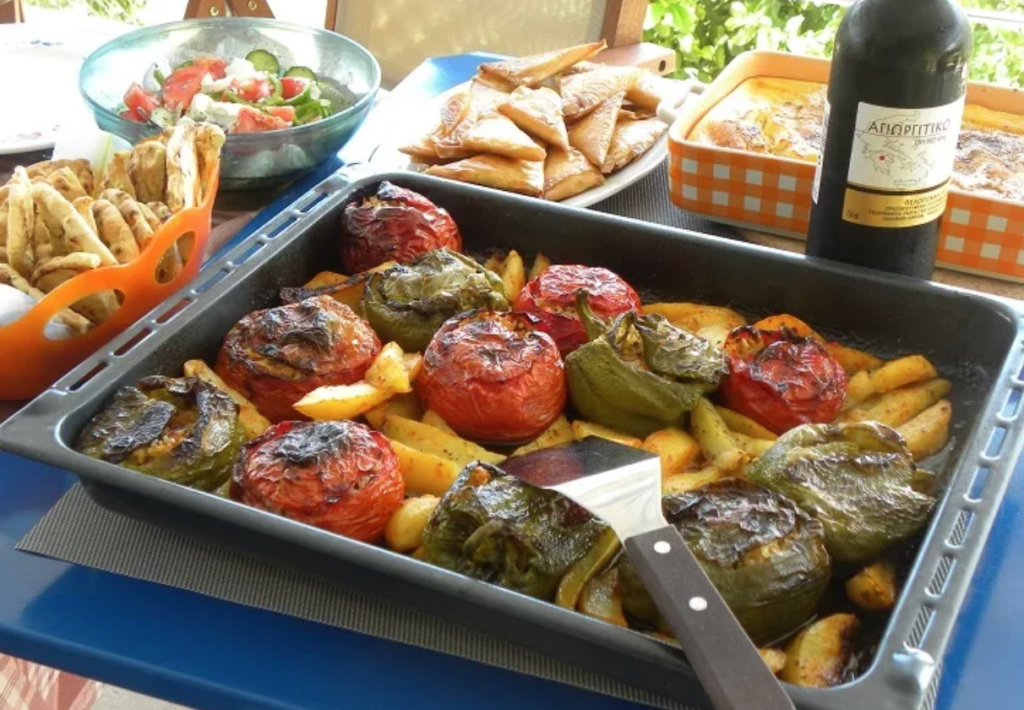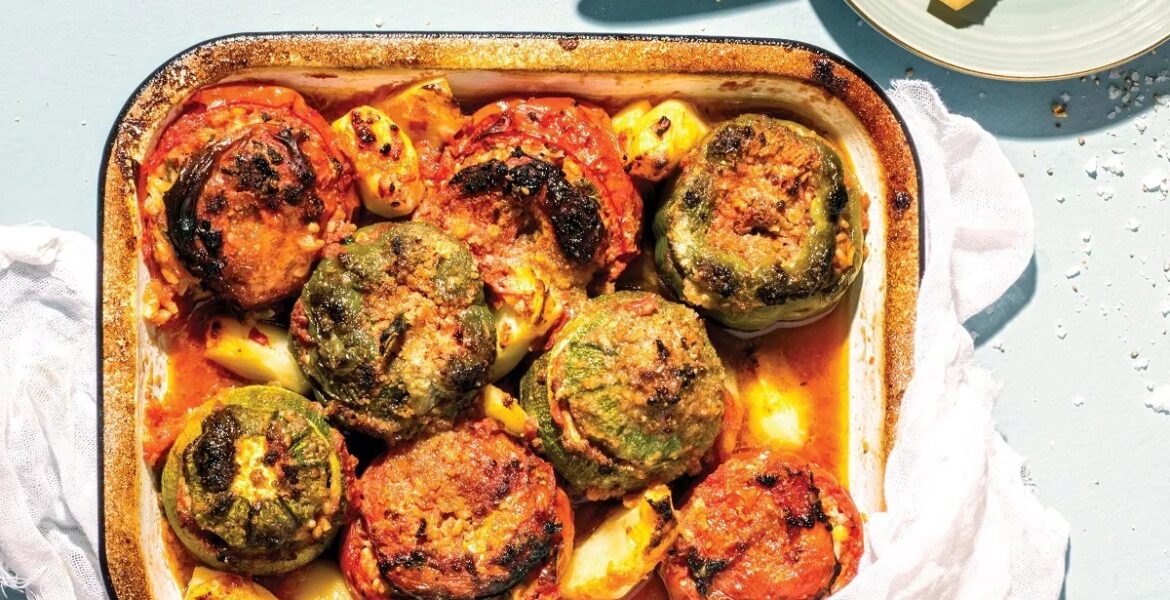A summer culinary happiness consists of delicious cooked vegetables with tomato sauce and mint aromas.
Gemista, or stuffed foods, have won the most enviable titles on the culinary catwalk.
They have been informally voted as one of the most popular summer foods, as the ladero (oily foods) that brings back happy memories, but also as a food that invites you to hedonistic experiences.

Gemista is a plate or - rather a pan (!)- that builds bridges between peoples and cultures and is surrounded by charming stories - a delicious legend to which we will surrender right away.
So, let's start!
Once upon a time…
Once upon a time, the brave and beautiful princess Scheherazade in "A Thousand and One Nights", after going through all the adventures that fate had in store for her, it was time to invite the Sultan of Persia to dinner. And then she offered him as a first course – just as the wise talking bird had advised her – cucumbers stuffed with pearls.
The Sultan was puzzled since stuffed vegetables were a common dish, but this stuffing was unusual. At that time, known as the era of the Caliphates (7th-11th century), in the region of the Arabian Peninsula and the Middle East, they stuffed their vegetables not with pearls, of course, but with couscous or rice.
What happened after this serving is another story; however, we have a written record of the custom of stuffing vegetables in this tale.
Trip to France
From Persia, dolmeh, with the aroma of tarragon leading the way, spread worldwide with various fillings and variations. This was done, according to one version, because when the Shah of Persia once went to Paris with all his retinue, he had his cooks prepare Persian food, including stuffing, to impress the French, who boasted of culinary excellence—their supremacy.
The stuffed ones impressed and were named after the French farci (Farsi), where Farsi or Parsi is the Persian language. That is, dolmeh were called in a Persian way!
Some more prosaic others attribute farci to the verb farcir meaning to fill. However, be that as it may, the French loved dolmeh, and nowadays, famous ones are those of Provence, made from Lilliputian vegetables and stuffed with a mixture of vegetables, meat, aromatics and bread crumbs.
But also throughout the Mediterranean, stuffed foods are popular.
In our neighbourhood
They are as well known in Turkey as they are in Greece. In the cuisines of the former Ottoman Empire and the surrounding areas, all gemista are called dolmades, from the verb "dolmak", meaning to fill.
In Mehmed Kâmil Pasha's cookbook Melceü't Tabbahin (The Refuge of Cooks), written in 1844, there is a recipe for stuffed tomatoes, which were then called Frankish eggplants. Stuffed yalanzis are also mentioned for the first time, which did not contain meat and were cooked with oil, something almost unnatural for the Ottoman cuisine based on meat and butter.
In Greece now, we call them as dolmades. Gemista is gemista.

We usually make them oiled, and the filling consists of rice or semolina and includes onion, tomato sauce and spices. They are made mainly with tomatoes, peppers, eggplants, and zucchini, while the dish is garnished with baked potatoes.
Their recipes are almost as numerous as the houses they are made in. They are baked in the oven, in a deep pan, but some prefer the pot.
Politika are made with plenty of onion, pine nuts, raisins and a little cinnamon. In Crete, it used to be filled with fat, while in Tsakonia, they put semolina and feta cheese as fillings. In Florina they call the round peppers babkas and in winter they stuff them with dried peppers, while the light glutinous rice and carolina varieties are considered the best for stuffing.
New morals
I don't mean to upset anyone, but there are alternatives filled with quinoa, millet and buckwheat that aspire to compete with the "orthodox". There are also the deconstructed ones (slowly, they would be missing!) with a look reminiscent of the proverb, "The priest is in one place, his race is in another".
I accept the challenge and oppose the sweeping power of the classic to see who will prevail.

So, let's close our eyes and imagine a tray with an equal number of medium-sized peppers and tomatoes. They are slightly pierced at the base so the rice absorbs plenty of tomato sauce.
They are warm, and on the table, there is feta, fresh bread and cold beer to accompany them.
I do not describe more. I think we have a winner!
Melissa Stoili is a columnist for Olive Magazine.
READ MORE: How an Ikarian diet can help you live to 100.


